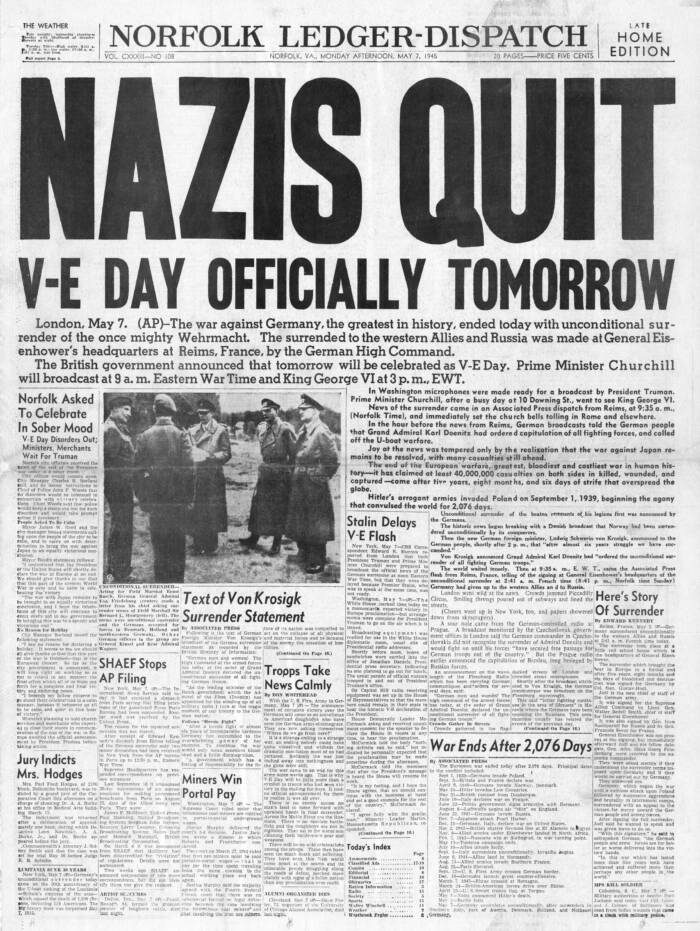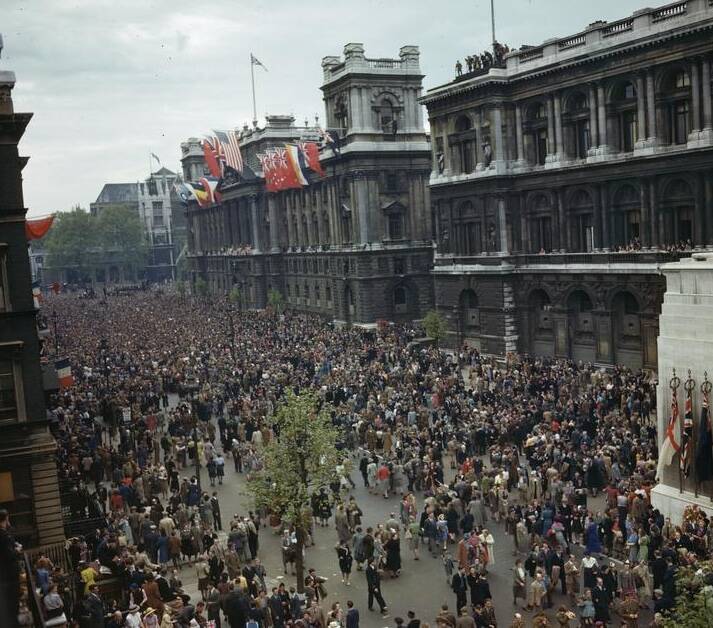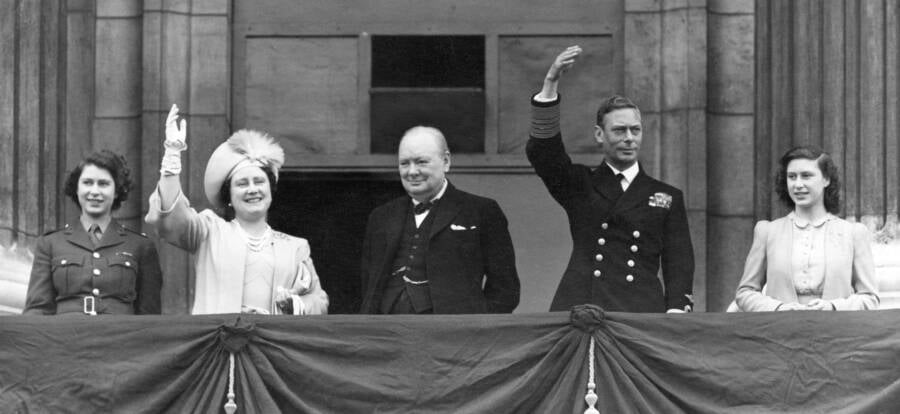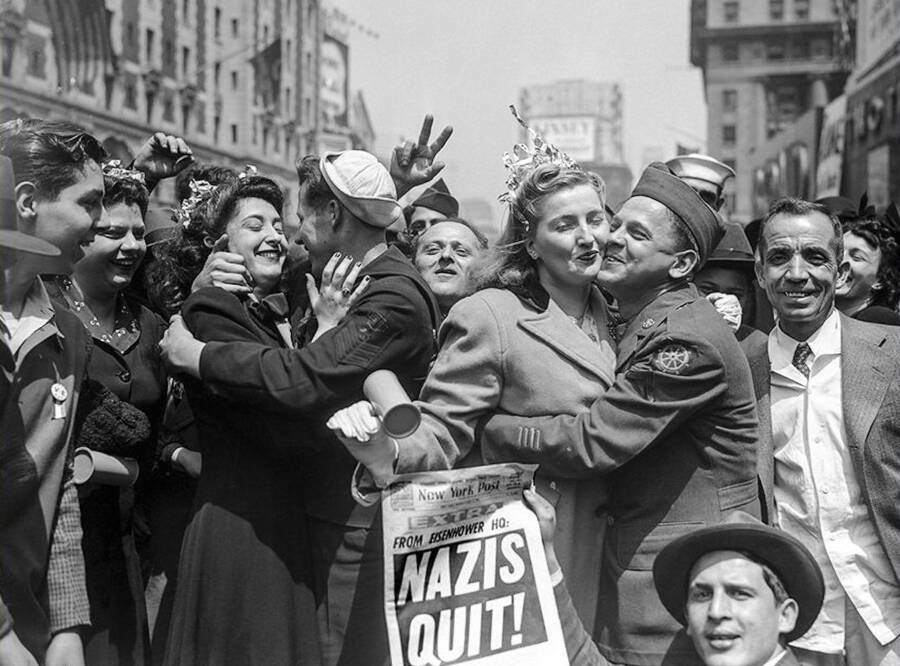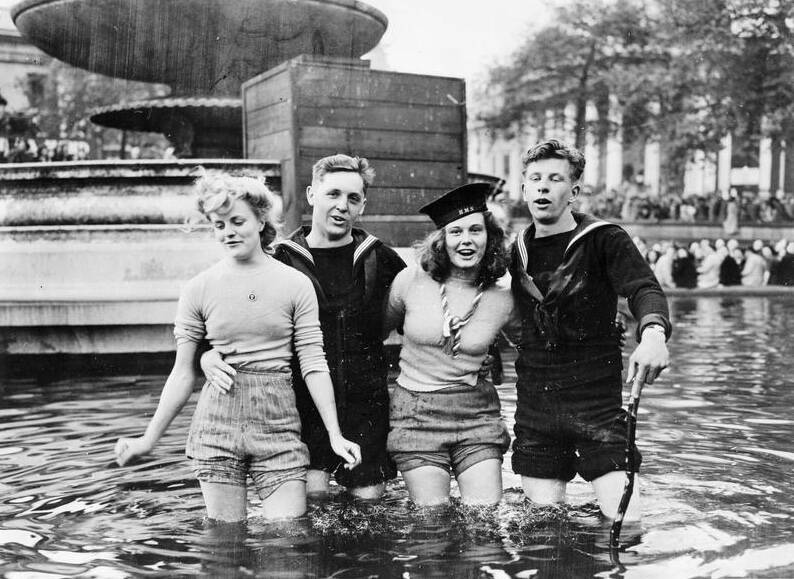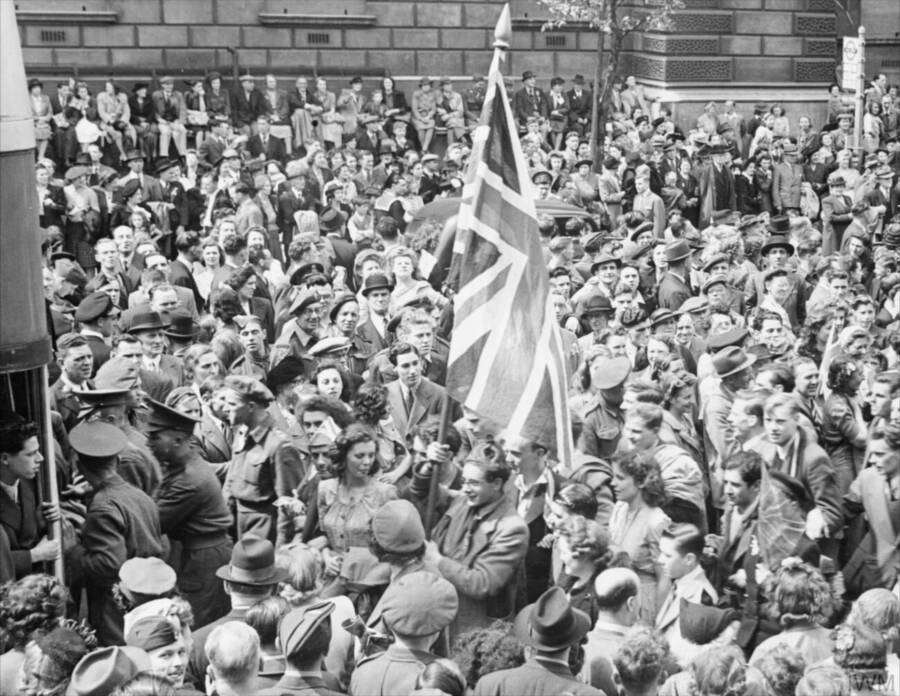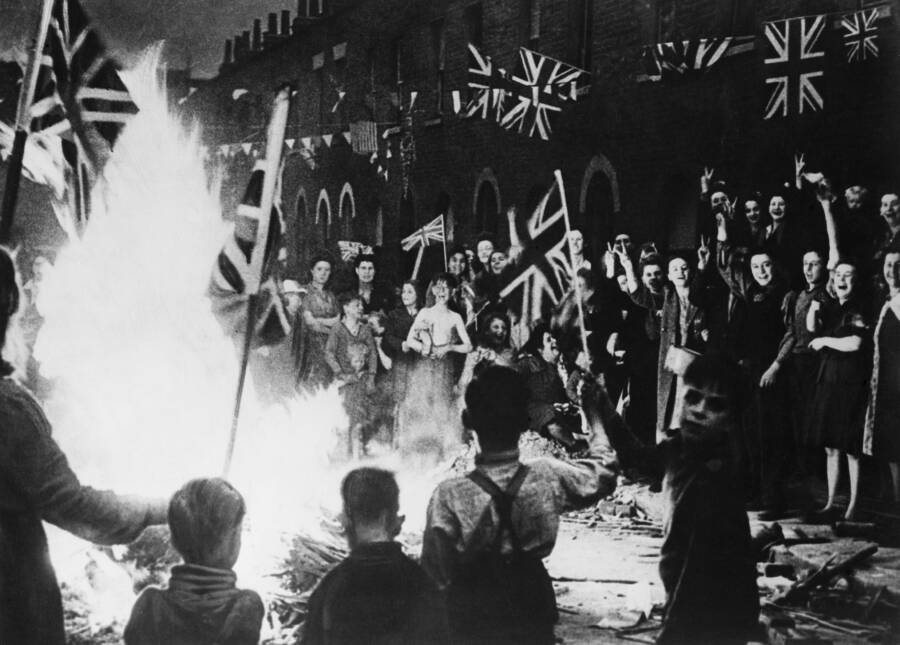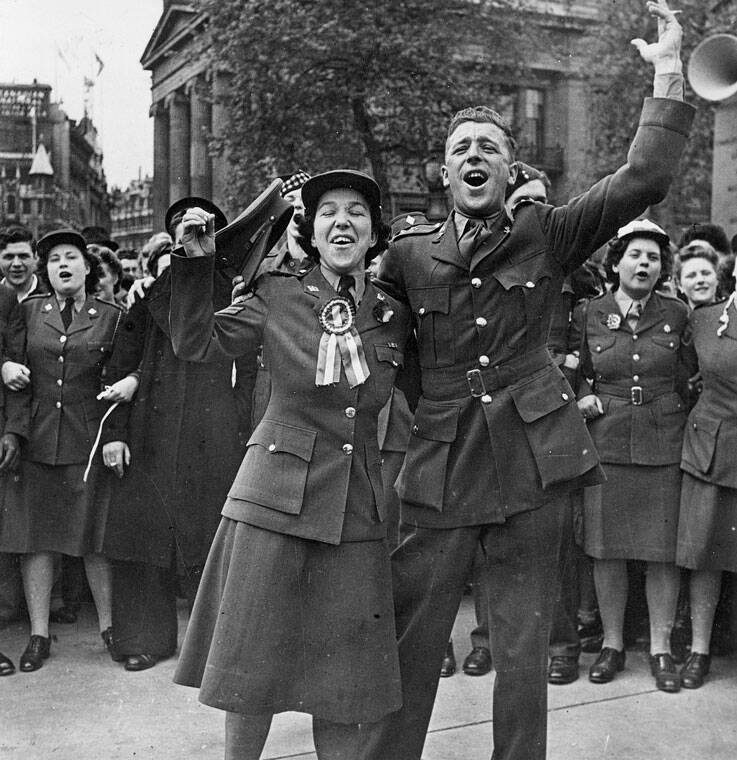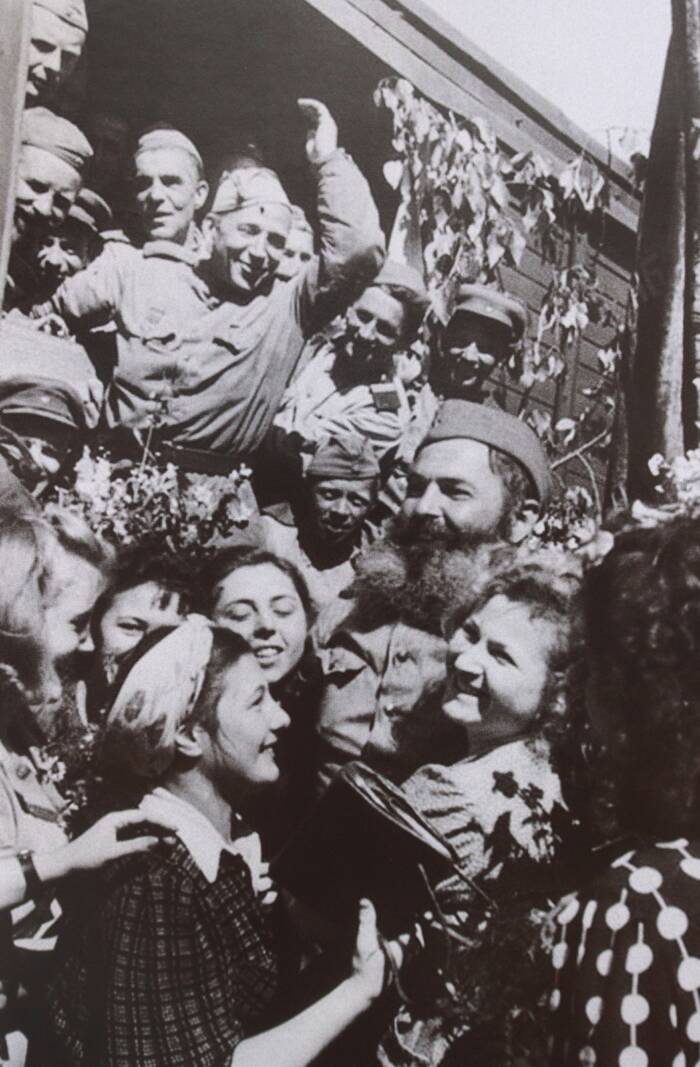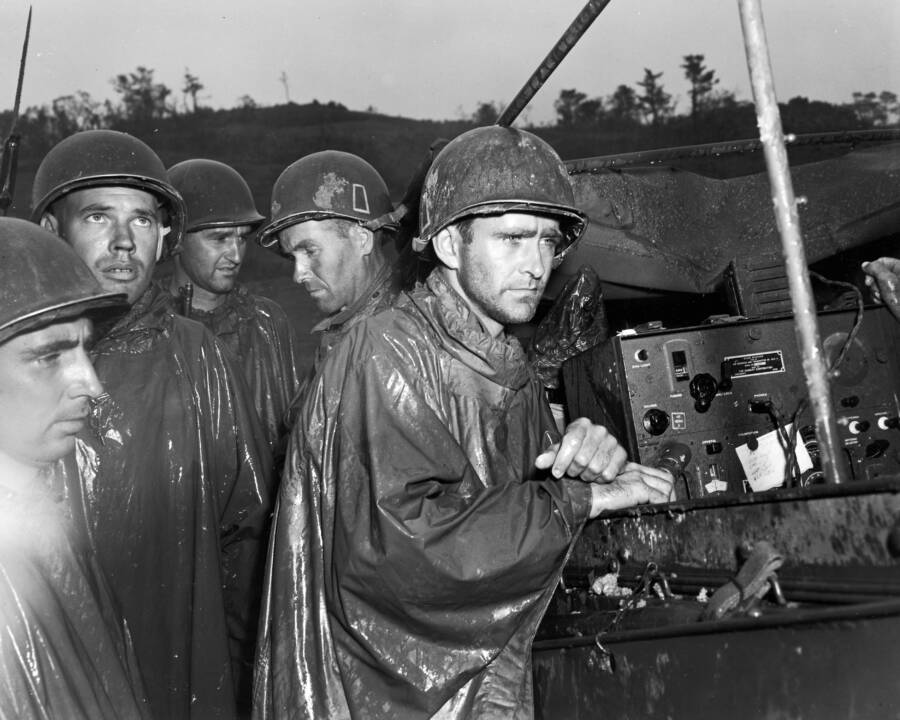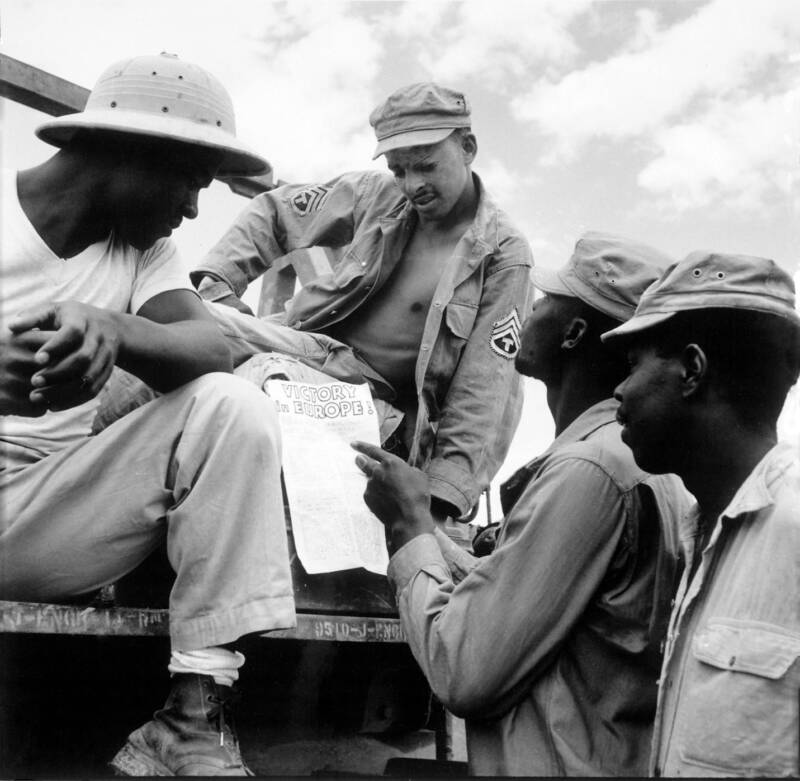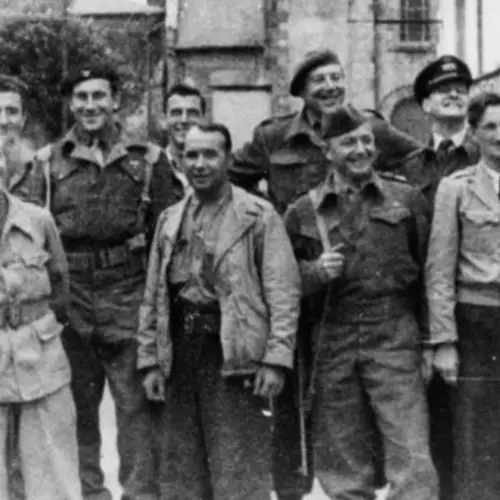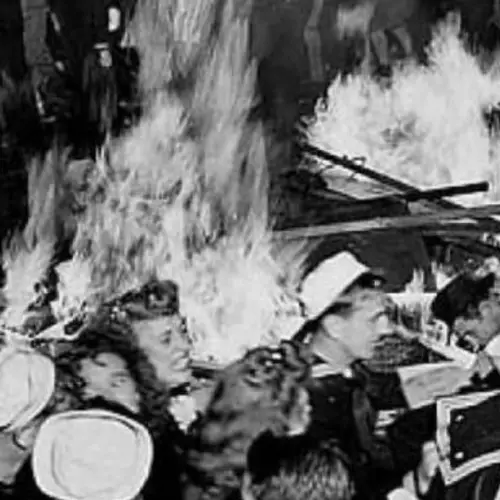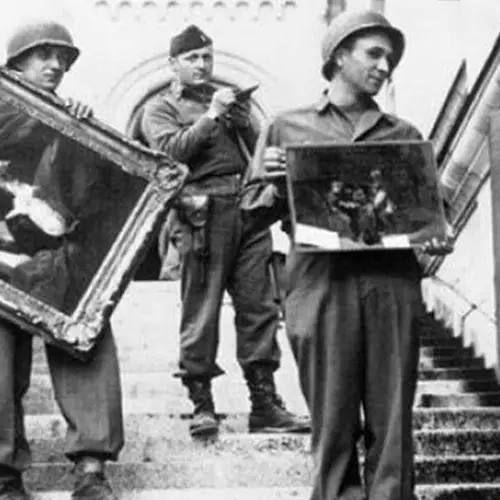On Victory in Europe Day, massive parties and parades erupted across Britain, the United States, and other Allied countries to celebrate the surrender of Nazi Germany.
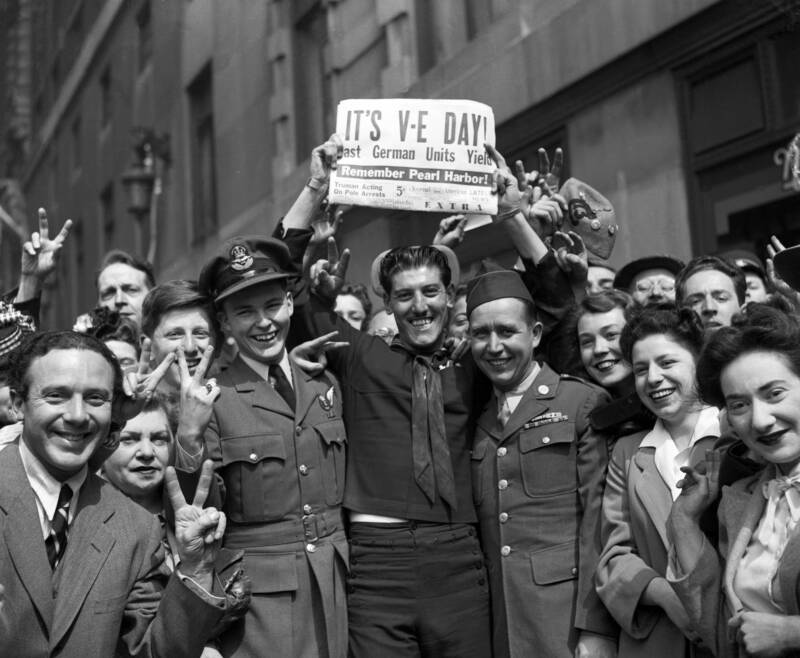
World History Archive/Alamy Stock Photo A crowd in London on May 8, 1945, celebrating VE Day, the day that marked the end of World War II in Europe.
Between 1939 and 1945, World War II devastated a significant portion of Europe and Asia. The rise of Adolf Hitler, the spread of Nazi ideology, the brutal ambition of the Japanese Empire, and the fascist agenda of Benito Mussolini plunged the world into chaos, creating a conflict that would redefine the nature of war and forever change international relations.
For a time, it seemed like there would be no end to the war — or, at the very least, no good end. The Axis Powers had orchestrated a brutal campaign across Europe and Asia, but by 1945, a major shift had occurred. Nazi Germany had begun to collapse amidst the Allied advances from the east and west. Then, Adolf Hitler, already in poor health and watching the tide turn against him, killed himself in his private bunker on April 30th.
Shortly thereafter, German General Alfred Jodl prepared to surrender at American General Dwight D. Eisenhower’s headquarters in Reims, France. At first, Jodl tried to surrender only to the Western Allies, but Eisenhower would only accept a complete surrender of all Nazi forces still fighting on the battlefield. So, on May 7th, the Nazis surrendered unconditionally to the Allies at Reims. And just one day later, on May 8, 1945, celebrations instantly broke out across Britain, the United States, and other Allied countries.
The day was celebrated as Victory in Europe Day, or VE Day. Through our gallery of 44 VE Day photos below, you can see the overwhelming joy, triumph, and relief that took over much of the Western world.
The Road To Nazi Germany's Surrender
Although it was not always obvious, the downfall of Adolf Hitler's Nazi Germany was a long time coming. The reasons for this were Hitler's aggressive expansionist policies and the ideology of the Nazi regime itself. Hitler desperately wanted to expand German territory eastward, displacing or eliminating those he deemed "inferior" in the process.
When Germany annexed Austria during the Anschluss in 1938, and occupied Sudetenland, Hitler was initially met with appeasement from Britain and France, who hoped to prevent a large-scale war. Of course, Hitler's ambition didn't stop there, and in March 1939, Germany occupied all of Czechoslovakia in violation of the Munich Agreement — and when the Nazis invaded Poland in September 1939, it officially marked the beginning of World War II.
Germany saw significant military success early on in the war, conquering much of Western Europe, including countries like France, Belgium, and the Netherlands. However, their attempt to invade the Soviet Union in 1941 started to spread German resources thin. And the tides really began to shift against Germany following the Battle of Stalingrad, as the Soviets started to aggressively push German forces back westward.
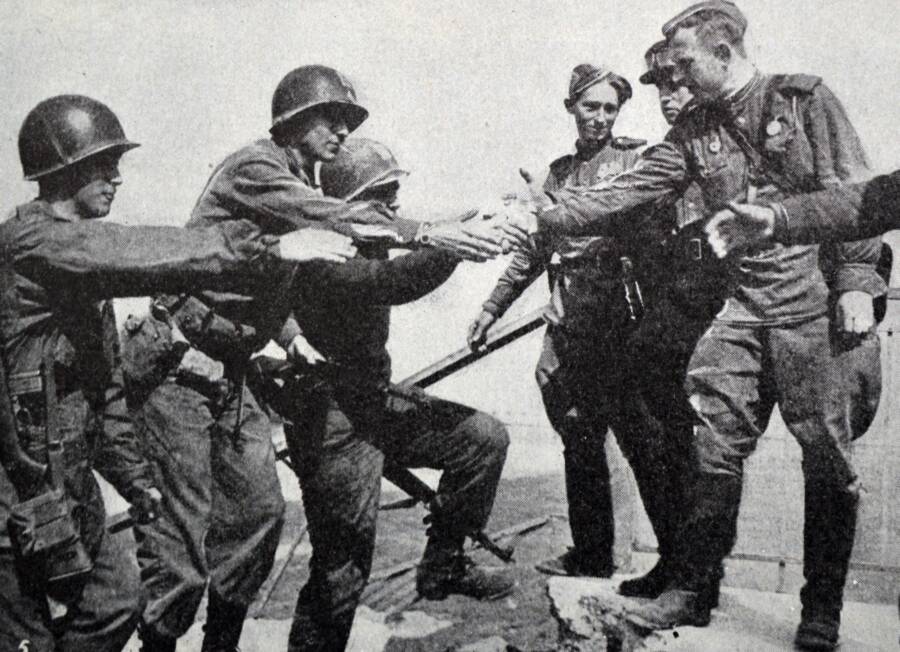
World History Archive/Alamy Stock Photo American and Russian troops shaking hands near the Elbe to celebrate the end of World War II in Europe.
D-Day in June 1944 established a powerful Western Front to put more pressure on Germany, which was now surrounded on both sides by an increasingly victorious Allied coalition. The Battle of the Bulge from December 1944 to January 1945 saw Germany suffer a devastating defeat in the west, paving the way for an Allied advance into Germany.
By early 1945, Germany was facing imminent defeat on both fronts. Soviet forces were advancing from the east, while other Allied forces continued to press in on the west. After Hitler died on April 30th, Admiral Karl Dönitz assumed leadership of the country and began trying to negotiate a partial surrender to the Western Allies to avoid Soviet captivity for German troops.
But the Allies demanded unconditional surrender on all fronts. On May 7th, General Alfred Jodl signed that surrender at the Allied headquarters in Reims, France, but the Soviets were not satisfied with the quiet nature of this surrender. So, the next day, a second signing took place in Berlin.
With that, World War II in Europe officially came to an end, and on May 8, 1945, VE Day celebrations kicked off across the world.
VE Day Celebrations Around The World
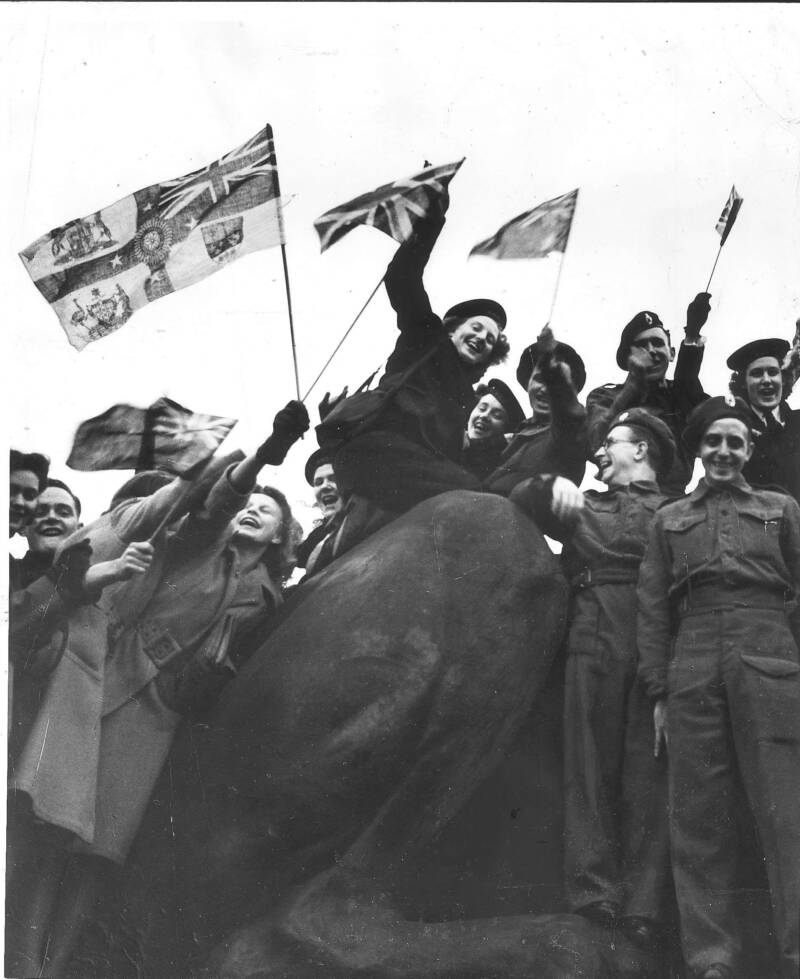
Trinity Mirror/Mirrorpix/Alamy Stock Photo VE Day celebrations in Trafalgar Square in London.
While Allied forces in Germany divided the country into four occupation zones controlled by the United States, Britain, France, and the Soviet Union, citizens in Allied countries around the world erupted into celebration.
In London, more than a million people flooded the streets. Crowds gathered in places like Trafalgar Square and outside Buckingham Palace, where King George VI, then-Princess Elizabeth, and other royal family members appeared on the balcony to greet the British people.
Prime Minister Winston Churchill gave a memorable speech to the VE Day crowds in London. "My dear friends, this is your hour. This is not victory of a party or of any class," Churchill said, addressing the nation after the official Nazi surrender. "It's a victory of the great British nation as a whole. We were the first, in this ancient island, to draw the sword against tyranny. After a while we were left all alone against the most tremendous military power that has been seen. We were all alone for a whole year."
Churchill celebrated the victory, but also reminded the British people that while the defeat of the Nazis marked the beginning of a new era, the fight against the Japanese had not yet ended. Still, the Nazi threat was gone.
The moment was so joyous, in fact, that Princesses Elizabeth and Margaret had even slipped out of the palace to join the crowds in the street incognito.
Of course, the joy was not isolated to Britain. In the United States, VE Day happened to coincide with President Harry S. Truman's birthday. Truman's speech echoed Churchill's, acknowledging that while Europe was free, the fight in Asia still raged on. He also dedicated the day to the memory of his predecessor, Franklin D. Roosevelt, who had died just weeks earlier.
"This is a solemn but glorious hour," Truman said. "General Eisenhower informs me that the forces of Germany have surrendered to the United Nations. The flags of freedom fly all over Europe. It's celebrating my birthday, too... For this victory, we join in offering our thanks to the Providence which has guided and sustained us through the dark days of adversity."

Shawshots/Alamy Stock Photo Crowds in New York celebrating the Nazi surrender on VE Day.
Celebrations also broke out across the U.S., especially in New York City, where Times Square was filled with confetti, music, and dancing. The crowds were so massive that 15,000 police officers were required to control all the people who'd gathered in Times Square alone. Ships in the harbor blasted their horns, and workers in the garment district tossed colorful fabrics into the streets. Similar celebrations could be seen across Canada as well, where the devastation of the war had, like in the U.S., been largely overseas.
But in the parts of Europe that had been more directly impacted by the fighting, some of the celebrations were more somber in tone. In France, for example, countless people took to the streets to rejoice, but cities like Paris still bore many reminders of occupation. It was clear that there was a sense of exhaustion — and that the hard work of recovery was still ahead.
While most of the celebrations carried that same mix of joy, relief, and exhaustion in cities such as Rome, Brussels, and Stockholm, there was also one notably tragic outcome of the VE Day celebrations.
In French Algeria, Muslim protesters organized in the hopes of achieving Algerian independence, a movement that was violently suppressed by French police. This led to a horrific massacre, which eventually helped set the stage for the French-Algerian War that began in 1954.
Despite this, VE Day was still overwhelmingly a day of joy. The Nazis had represented the most evil traits of humanity made manifest, and though the full extent of their concentration camps had not been revealed to the public yet, their surrender exemplified to many the power of good overcoming evil. Even still, many decades later, that is the lingering message of VE Day.
After reading about the VE Day celebrations in 1945, see how the world celebrated Christmas during World War II. Then, check out some incredible photos of the American workers who helped the Allies win the war.
